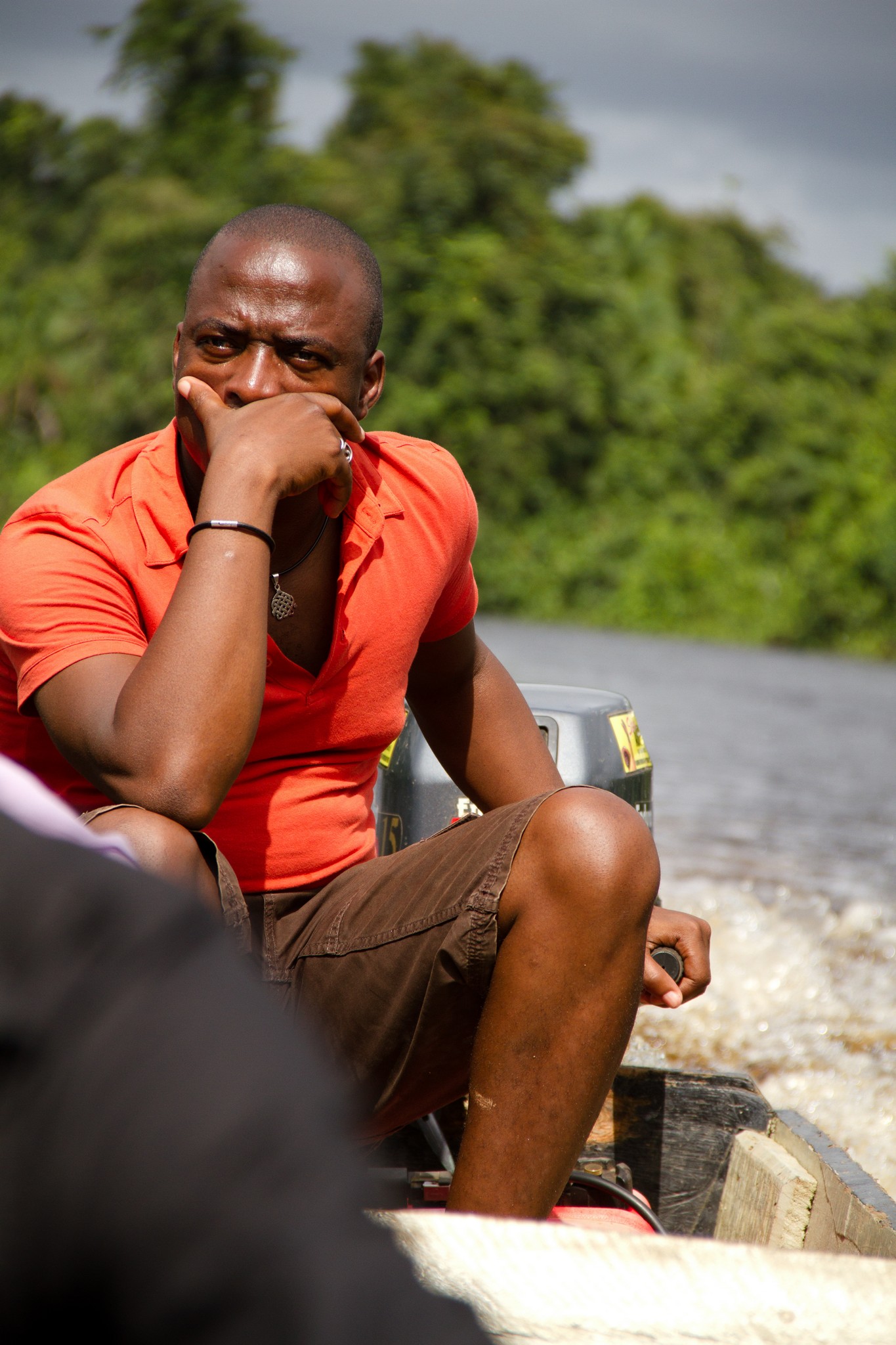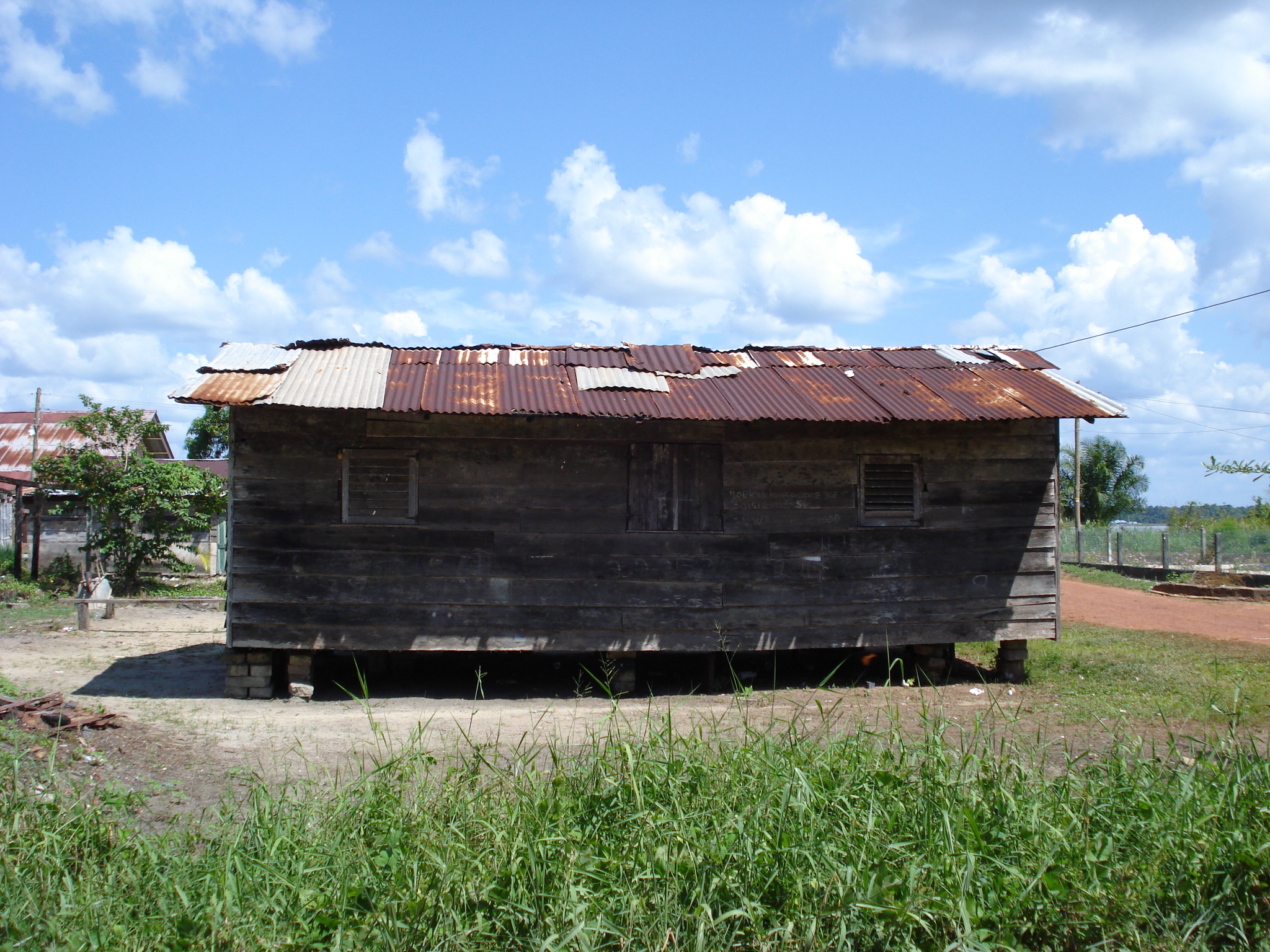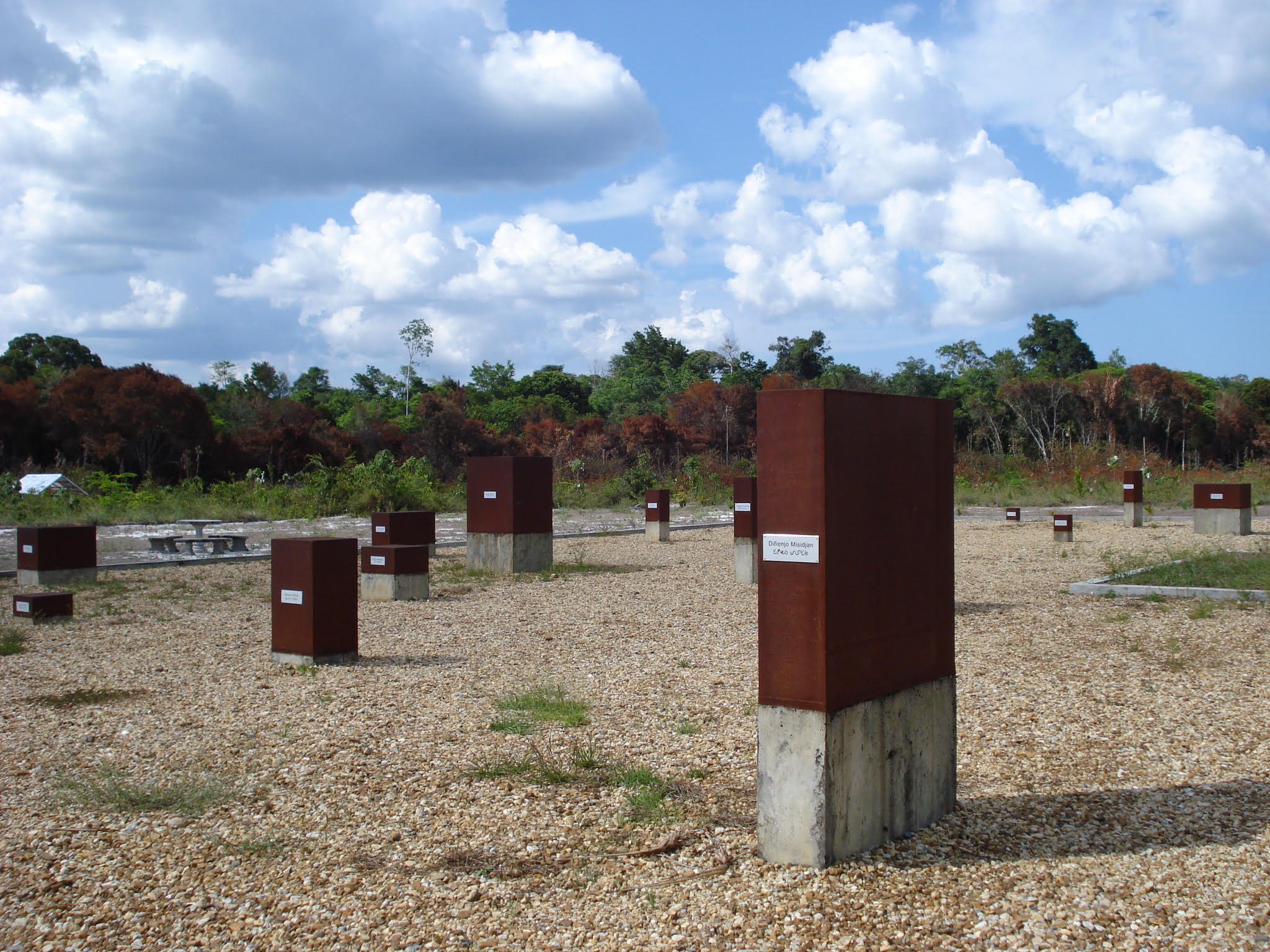Interview w/ Marcel Pinas (visual artist and community activist) - part 1
![]()
![Road to Moengo]()
![House in Albina on the Marowijne]()
![Public Work on the Julianaweg-Weyneweg to Moengo]()
![Moiwana Monument]()
![]()






1. On Being
You see, living in the forest
. . . That was my world
It was very important to grow up in forest,
Going to plant, we swim, we go to hunt
You (learn) how to build things
. . . I was part of it (the forest)
I think that (was) very important for me as a human (being);
(In leading) to the things that I am doing today
I (would) go to school by canoe . . . every morning.
. . . That was my world
It was very important to grow up in forest,
Going to plant, we swim, we go to hunt
You (learn) how to build things
. . . I was part of it (the forest)
I think that (was) very important for me as a human (being);
(In leading) to the things that I am doing today
I (would) go to school by canoe . . . every morning.
Discrimination . . . Stigmatisation . . .
(That) maroons are uneducated
You are not part of the system
People decide for you what will happen and how
Everything that is bad is the Maroon
. . . And then
We had the civil war
People lose faith in themselves
People don’t have things to hold on (to).
(That) maroons are uneducated
You are not part of the system
People decide for you what will happen and how
Everything that is bad is the Maroon
. . . And then
We had the civil war
People lose faith in themselves
People don’t have things to hold on (to).
'Suralco' has been working here for 100 years
What is left for the local community?
The poisoning or the dumping of the chemicals (in the river)
You do (economic) activities in that area,
The monies you don't spend in that area
You spend it in Paramaribo.
What is left for the local community?
The poisoning or the dumping of the chemicals (in the river)
You do (economic) activities in that area,
The monies you don't spend in that area
You spend it in Paramaribo.
2. On Shaping and Reshaping
By doing things you find yourself
I think that's a very nice process
Sometimes it's like you (do) not know what you want
It's the process (that) leads you to what you have to do
That is something that I follow always.
I think that's a very nice process
Sometimes it's like you (do) not know what you want
It's the process (that) leads you to what you have to do
That is something that I follow always.
Can art and culture help support;
. . . Help influence the way how people think?
It (could be) a very interesting process.
. . . Help influence the way how people think?
It (could be) a very interesting process.
I would like to have (a) Moengo University based on traditional maroon knowledge
You can (have it for developing) different fields,
So) then we would (be preserving) traditional knowledge.
We have the ingredients
We should challenge ourselves to develop new things that (are) at another level.
You can (have it for developing) different fields,
So) then we would (be preserving) traditional knowledge.
We have the ingredients
We should challenge ourselves to develop new things that (are) at another level.
3. On Communing, Communication and Community
I have to be in the community to get inspired by the community
To do the things;
To express myself about certain situations.
To do the things;
To express myself about certain situations.
I used to question myself as a maroon because (we had a lot of problems)
Then I (realised) that the best thing to do is to express myself
. . . How I am feeling
(Firstly) for my own people
And then for the people outside
I am still doing that
It's (my) inspiration resource.
Then I (realised) that the best thing to do is to express myself
. . . How I am feeling
(Firstly) for my own people
And then for the people outside
I am still doing that
It's (my) inspiration resource.
It is important to communicate with my own people
How will I do that?
I did the first art object
Then the second art object at Moiwana, dealing with the problem of the community
This work will deal with their suffering
This work will deal with the process of their struggle.
I was listening to the struggle
In every village that you go (to), people are talking about it (1986 Moiwana massacre).
Then I understood that this is something that is bothering these people
If we do something about it,
To make it visible . . . for these people,
It (would be) very important (in moving on) . . . to tell the story
Then you know that someone is listening to you.
It is a way of letting things go and continuing (on).
How will I do that?
I did the first art object
Then the second art object at Moiwana, dealing with the problem of the community
This work will deal with their suffering
This work will deal with the process of their struggle.
I was listening to the struggle
In every village that you go (to), people are talking about it (1986 Moiwana massacre).
Then I understood that this is something that is bothering these people
If we do something about it,
To make it visible . . . for these people,
It (would be) very important (in moving on) . . . to tell the story
Then you know that someone is listening to you.
It is a way of letting things go and continuing (on).
It (the memory of the 1986 Moiwana massacre) was there but it was not there.
They don’t know where they buried
. . . All these innocent people
The bodies
. . . And (for them) having this space is like a connection with their relatives who died.
Communication is very important . . .
They don’t know where they buried
. . . All these innocent people
The bodies
. . . And (for them) having this space is like a connection with their relatives who died.
Communication is very important . . .